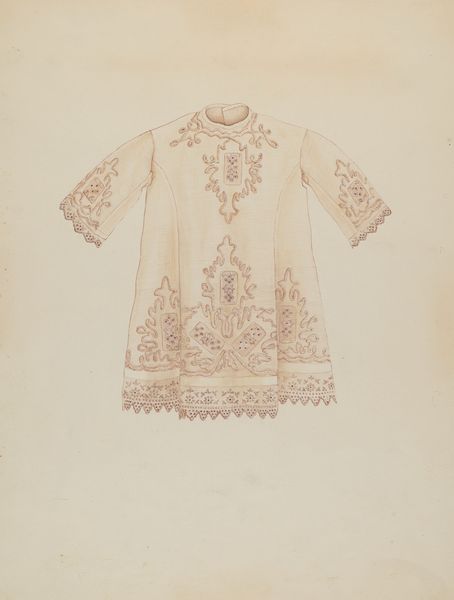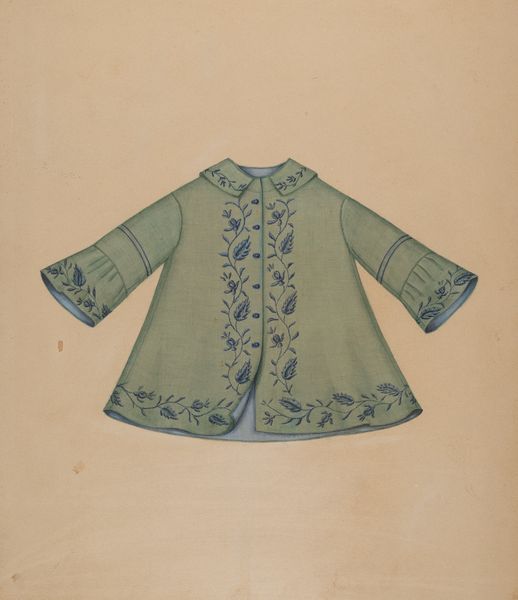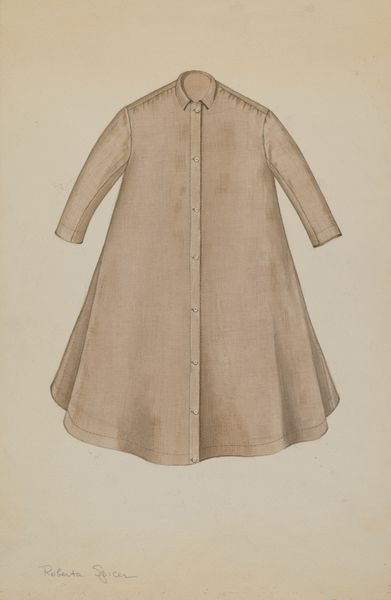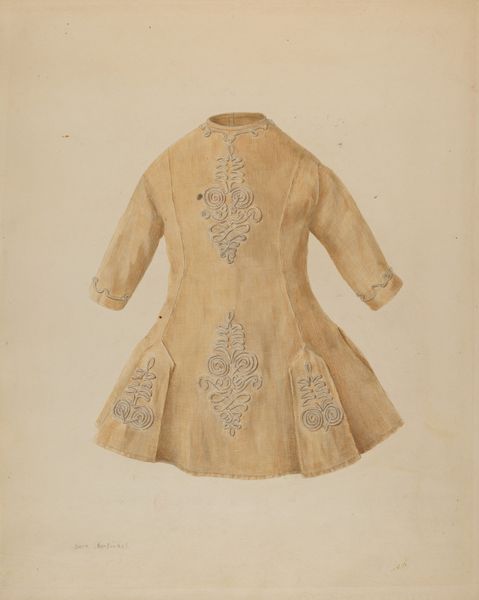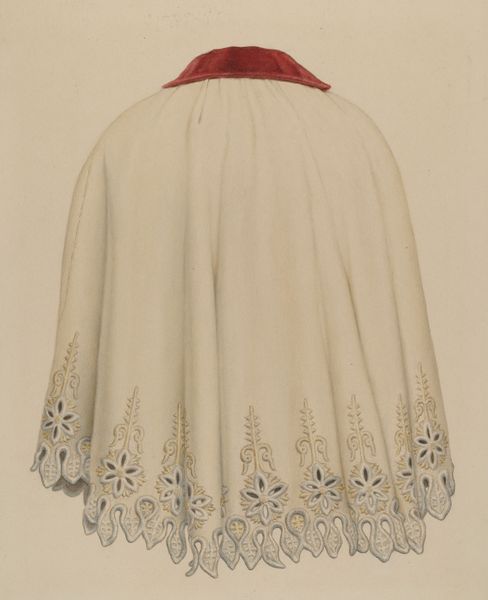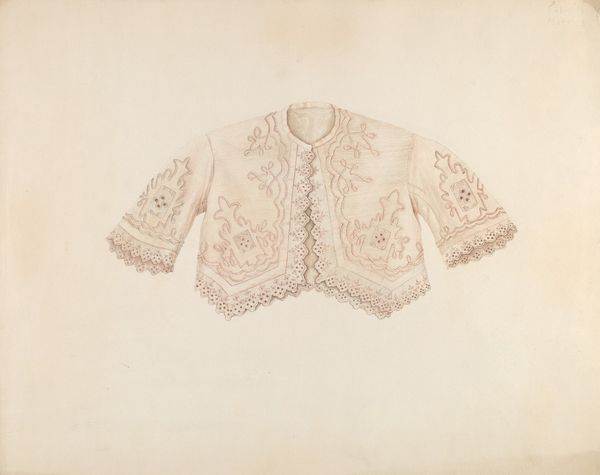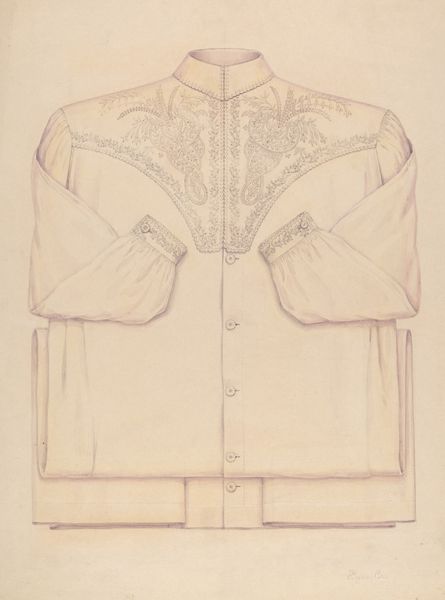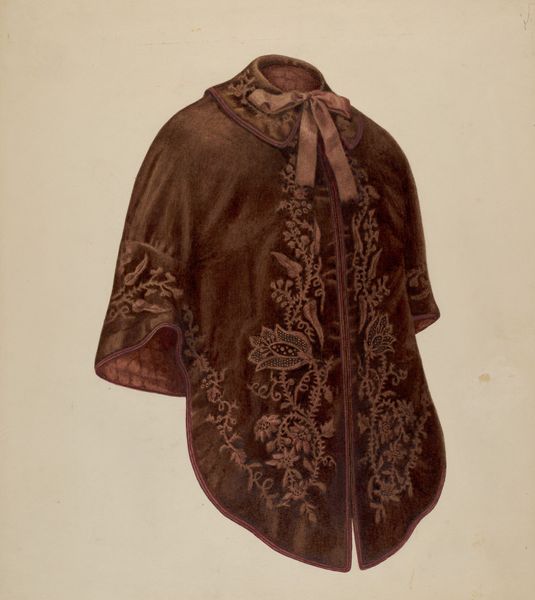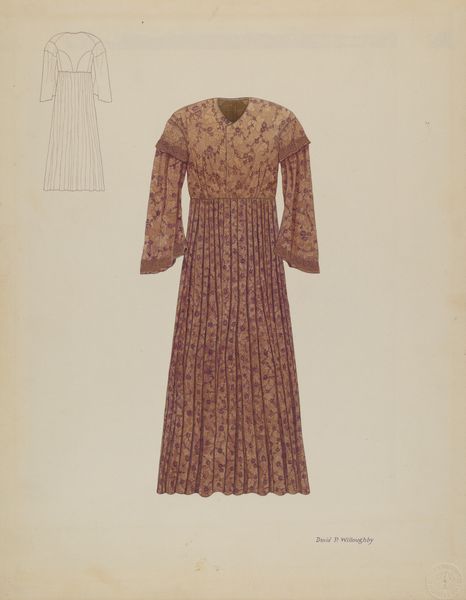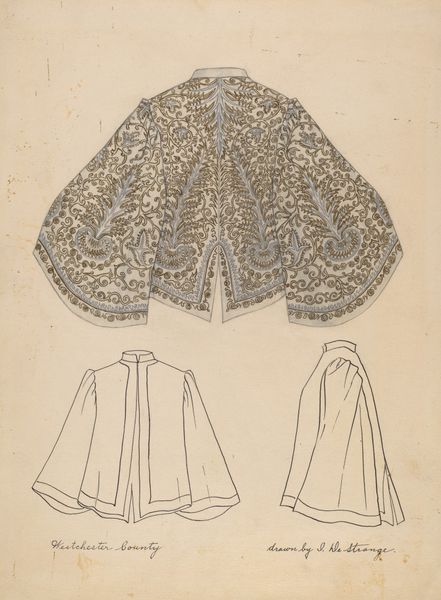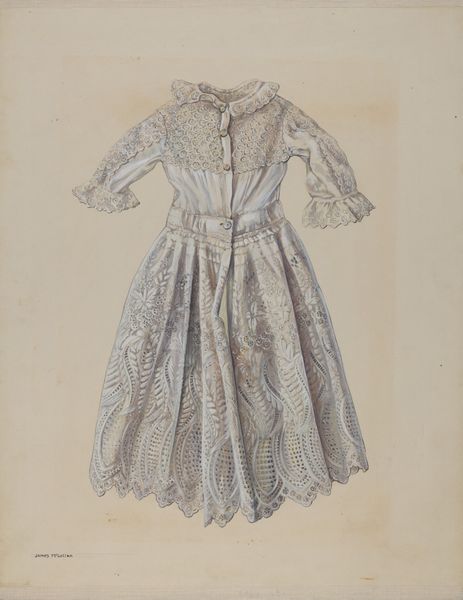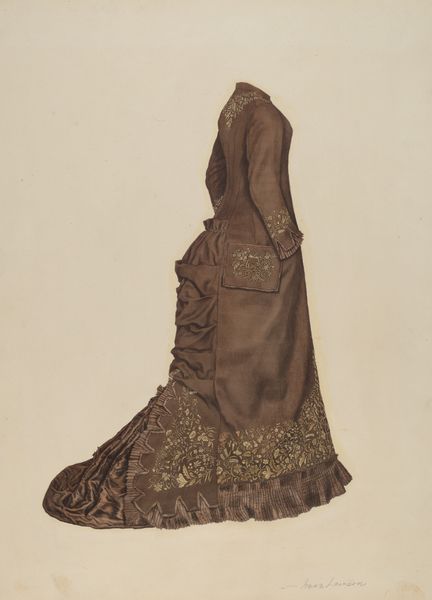
drawing
#
fashion design
#
drawing
#
underwear fashion design
#
toned paper
#
fashion mockup
#
fashion and textile design
#
historical fashion
#
textile design
#
fashion sketch
#
ethnic design
#
clothing design
Dimensions: overall: 35.5 x 28 cm (14 x 11 in.)
Copyright: National Gallery of Art: CC0 1.0
Editor: So, here we have "Opera Cloak," a drawing from around 1938 by Mary E. Humes. It’s rendered on toned paper, showing a design for what appears to be an elegant cloak. There's a real sense of refined taste in this fashion sketch, but I wonder, how did fashion pieces like this shape cultural identity at the time? Curator: That's a very astute question. Consider the sociopolitical context of the late 1930s. This piece emerges from the Federal Art Project, part of the WPA, during the Great Depression. How does knowing this shape our understanding of the work's purpose and its cultural significance? Editor: I guess it makes you think about function versus pure art. The design is so ornate, and perhaps there’s an aspiration toward luxury, even during economic hardship. Curator: Exactly! This garment might never have been produced, and the project may not have had funding or a specific role. It serves as documentation, a suggestion, a hopeful vision during tough times. Note the material choice represented. Why drawing? Why toned paper, giving it a sort of antique quality even when it was new? Editor: It seems that a sketch would be cheaper to create, but the toned paper, as you say, hints at richness despite its potential inexpensiveness... Curator: Precisely. And the meticulous rendering, typical of fashion sketches of the era, elevates what could be a simple design into something worthy of artistic attention. How does that tension - between documentation, artistic expression, and the social realities of the Depression - inform your reading now? Editor: I hadn’t really considered how social and economic conditions influenced fashion design at the time, but it now gives me a different way of thinking about it. Fashion isn't just clothing; it reflects societal anxieties and aspirations, doesn't it? Curator: Indeed. By analyzing the public role of art, even in something seemingly as simple as a fashion sketch, we uncover layers of meaning that go far beyond surface aesthetics.
Comments
No comments
Be the first to comment and join the conversation on the ultimate creative platform.
